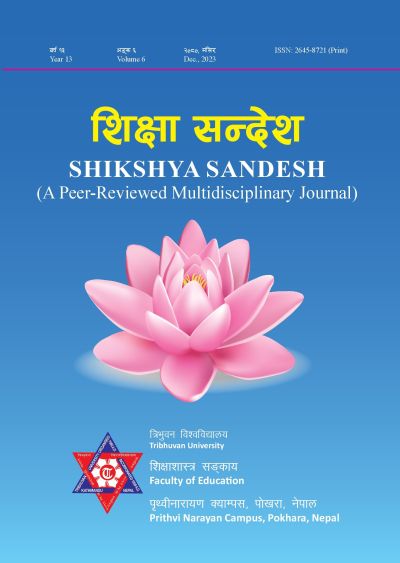The Integral Role of Political Parties in the Democratic Movement of 1950
DOI:
https://doi.org/10.3126/ss.v6i1.63089Keywords:
Democratic movement, armed struggle, autocracy, totalitarian state, Political partiesAbstract
Political scientists differ in the definition of democracy. Some see it as liberal reforms or structural changes brought about by opposition parties, while others see it as the overthrow of an authoritarian administration and the first democratic elections. In Nepal, the definition of democracy and democratic movement varies, starting as an anti-Rana movement against the totalitarian state of one family rule. The anti-Rana campaign in Nepal served as the seed for the democratic movement. Plots and violence entered Nepali politics when people’s involvement in politics had decreased, which resulted in Jung Bahadur’s foundation of Rana authority in 1846. The democratic system, which was founded on the public’s involvement for fundamental rights, started to topple the repressive and authoritarian government. Since 1950, a great number of Nepali heroes have given their lives to bring democracy to their country. The purpose of this study is to uncover the political parties’ unacknowledged contributions to Nepal’s democracy struggle. This paper examines the multifaceted involvement of the political parties, highlighting the diverse strategies, mobilization techniques, and collaborative efforts that shaped the outcome of the democratic movement. Based on qualitative research method this paper shapes interpretivism utilizing and analyzing political movements and revolt change is Hegel’s Dialectical and David Easton’s Political System Theory. Hegel’s notion of “thesis-antithesis and synthesis,” which advances society, describes the conflict between outmoded and progressive concepts. The input-process-output combination that connects political parties and mass mobilization is the focus of Eastons’ theory. This paper briefly introduces Contextualizing the democratic movement in Nepal and its significance. It also highlights the Nepal’s historical and political context, tracing the events leading up to the 1950. Qualitative data about the topic under discussion has been gathered through in-depth interviews and library research. It is restricted to research on the topic’s history. The country’s democratic movement has been a central force shaping its evolution, with political parties serving as both catalysts and conduits for change. This article delves into the crucial role of political parties in Nepal’s democratic movement, highlighting their contributions, challenges, and the ongoing significance they hold in the nation’s political landscape.
Downloads
Downloads
Published
How to Cite
Issue
Section
License
Copyright (c) 2023 The Author(s)

This work is licensed under a Creative Commons Attribution-NonCommercial 4.0 International License.
This license enables reusers to distribute, remix, adapt, and build upon the material in any medium or format for noncommercial purposes only, and only so long as attribution is given to the creator.




